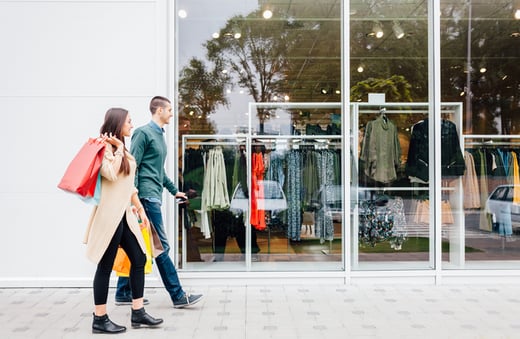 Geo-marketing has quickly risen as a popular form of advertising. With geo-marketing, brands can reach out to customers within precise geographical areas. For example, when people drive close to a particular store, they might receive a promotion about a sale. Since the ad appears at an opportune moment for the customer, it becomes more enticing for the person to engage with the promotion and come check out the sale.
Geo-marketing has quickly risen as a popular form of advertising. With geo-marketing, brands can reach out to customers within precise geographical areas. For example, when people drive close to a particular store, they might receive a promotion about a sale. Since the ad appears at an opportune moment for the customer, it becomes more enticing for the person to engage with the promotion and come check out the sale.
These promotional styles have become popular simply because of the deep penetration and high efficiency they offer. There are about 2.5 billion smartphones in the world right now, and 63 percent of these users use apps that employ location data. This makes it easy for marketers to reach out to these prospects and let them know about promotions and business that might interest them based on where they are.
This explains why nearly two-thirds of marketers use location data for ads and promotions and nearly half use location-based offers. Geo-marketing allows you to reach your target audience of local users without wasting time marketing to those who will never become customers, simply based on their location. Since countless people always have their phone in hand, this form of advertising allows brands to reach out with the right message at the right time.
To take geo-marketing to the next level, brands can also take advantage of an effective advertising tactic known as mobile conquesting. Here’s how this strategy can drive store traffic through location-based targeting.
How Mobile Conquesting Can Build Traffic and Engagement
With mobile conquesting, brands can send out targeted advertising to people who meet a number of different criteria, including their behavior, location, and even specifics such as the weather conditions they currently experience. This phenomenon puts personalized advertising to work, allowing brands to tailor messaging to suit their customers’ particular needs.
There are over 10,000 conditions that can be used to target customers. Consider some of the possibilities:
- Furniture or appliance stores can target neighborhoods with new housing developments.
- Businesses specializing in suits and swimwear can target those in regions experiencing the first signs of summer.
- Restaurants running a special promotion can deliver ads to consumers that are in close proximity to their business.
Retargeting is another possibility with mobile conquesting. With retargeting, location data can be used to not only send advertising to people near a specific store, but it can also be used to connect with people who had visited a store in the past. This increases the number of interactions the customer has with the brand, thus boosting the chances that they will convert.
Stores can also reach out to customers when they are in the vicinity of a competitor’s store. These businesses can take advantage of this opportunity to let prospects know why their store will meet their needs better than the competitor. This not only increases traffic and revenue, but increases their overall market share.
By reaching out to people at particular moments - such as their attendance at a particular event or as they enter or leave a specific geographical radius - brands will improve their ability to reach customers at precisely the right moment. In this way, they will increase traffic into their store, and thus boost customers and revenue.
With geo-targeting and mobile conquesting, brands can create hyper-personalized ads that enhance the ability of marketers to reach people at the optimal moment. Learn more about Zimmer Marketing and how our experienced team can help you leverage mobile conquesting in a way that drives store traffic and helps your business thrive.

